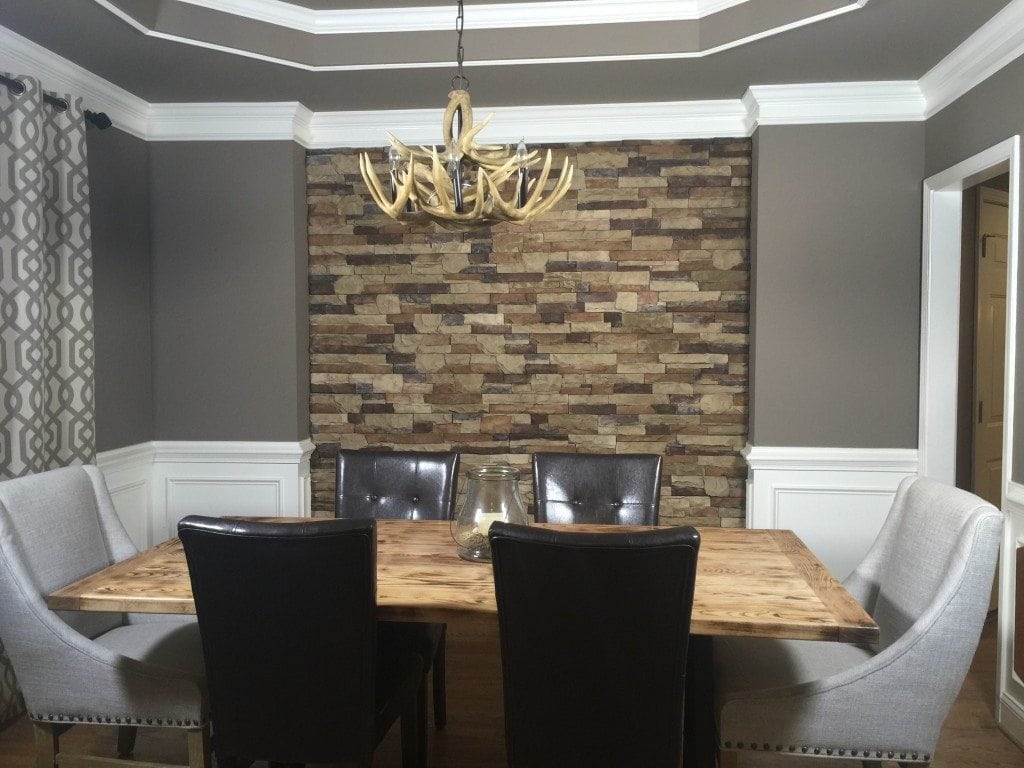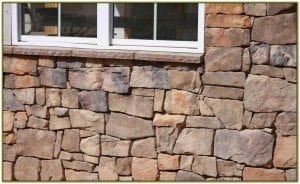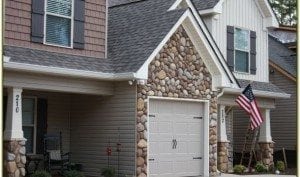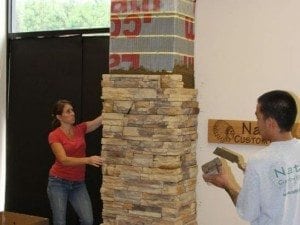Whether stone is old, newly quarried, synthetic, or made from cast concrete, it can be incorporated into the interior design of any home.
Of course you can build with stone, or use a stone veneer for walls or panels. Alternatively, you can use stone to create features and add style to any room in your home.
The Advantages of Stone Walls
There are so many stone products to choose from you’ll be spoilt for choice. But generally stone will add a natural, earthy vibe and a gorgeous texture other materials can’t provide. They help with the absorption of sound and also provide a unique pallet for adding pattern, color and texture to interior design. Better still, stone surfaces are generally exceptionally durable and easy to maintain.
Whatever you decide to use to incorporate stone into your home’s interior design scheme, you will find there is a wide range of stone types in a variety of price ranges. Some require professional installation while others are easily installed by competent DIY enthusiasts, using minimal tools.
Top Ten Interior Design Ideas for Incorporating Stone into Your Home
- Use stone around a fireplace, but don’t cover the whole wall. It will enable you to add both color and texture to the room, creating your own unique character. This is a particularly easy project using lightweight manufactured stone veneer.
- Build a kitchen island out of stone, or build a frame and add simulated stone cladding to make it look as if it is solid stone. Top the island with a slab of marble or granite, or tile the top with matching simulated stone tiles.
- Tactile stone used on a bathroom wall can be the perfect foil to high-sheen tiles or even rustic stone tiles.
- A conventional bath may be boxed in above ground and the sides tiled to match or contrast with the wall.
- For something completely different, leave a gap between tiles in your entrance hall or even your bathroom floor, and lay river stones in mortar to create a handmade pattern. Push them into the soft mortar so that they don’t protrude too much and allow the mortar to set properly before walking on it.
- Create the effect of exposed stone by cladding a feature wall with stone or stone veneer. It’s the perfect way to add the character of age, and will also add pattern and texture to the interior design scheme. For vivid contrast paint adjacent walls white or a very pale creamy stone color. Imaginatively done, there will be people who mistake this for original stonework.
- If there are pillars in your home, cladding these with stone can create the most amazing effect. If you restrict the use of stone to the pillars alone, you will benefit from visual impact.
- Clad the walls of a stairwell in stone and use lighting to highlight its texture. The stairs themselves may be tiled in a sympathetically matching color, or finished so that they create a contrasting effect.
- If there’s sufficient light inside your home, build a stone planter and introduce plants that will thrive indoors.
- Define a home bar area using stone both on the walls and on the bar itself. Manufactured Go-Stone panels will be ideal for this project.







Follow Us!